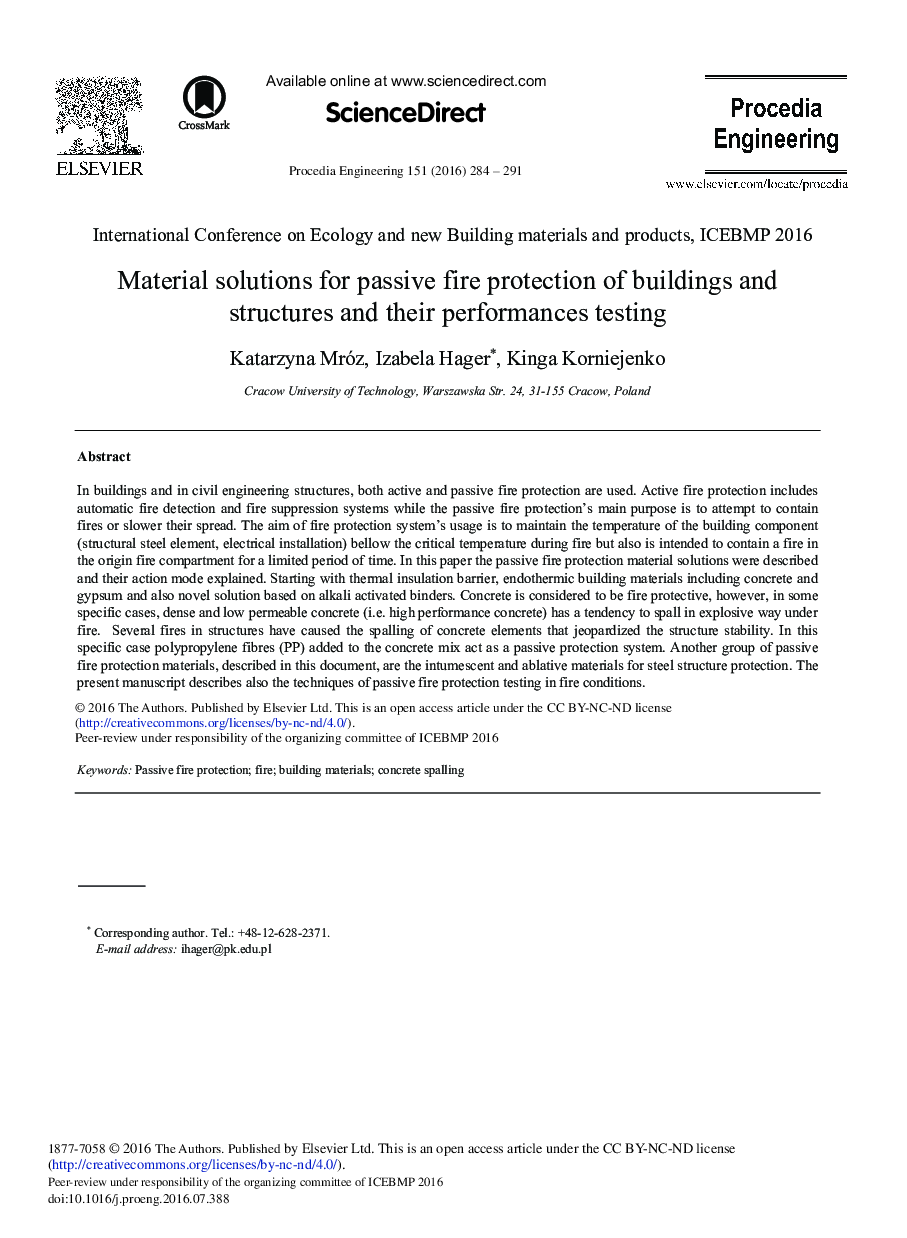| کد مقاله | کد نشریه | سال انتشار | مقاله انگلیسی | نسخه تمام متن |
|---|---|---|---|---|
| 853150 | 1470675 | 2016 | 8 صفحه PDF | دانلود رایگان |
In buildings and in civil engineering structures, both active and passive fire protection are used. Active fire protection includes automatic fire detection and fire suppression systems while the passive fire protection's main purpose is to attempt to contain fires or slower their spread. The aim of fire protection system's usage is to maintain the temperature of the building component (structural steel element, electrical installation) bellow the critical temperature during fire but also is intended to contain a fire in the origin fire compartment for a limited period of time. In this paper the passive fire protection material solutions were described and their action mode explained. Starting with thermal insulation barrier, endothermic building materials including concrete and gypsum and also novel solution based on alkali activated binders. Concrete is considered to be fire protective, however, in some specific cases, dense and low permeable concrete (i.e. high performance concrete) has a tendency to spall in explosive way under fire. Several fires in structures have caused the spalling of concrete elements that jeopardized the structure stability. In this specific case polypropylene fibres (PP) added to the concrete mix act as a passive protection system. Another group of passive fire protection materials, described in this document, are the intumescent and ablative materials for steel structure protection. The present manuscript describes also the techniques of passive fire protection testing in fire conditions.
Journal: Procedia Engineering - Volume 151, 2016, Pages 284–291
